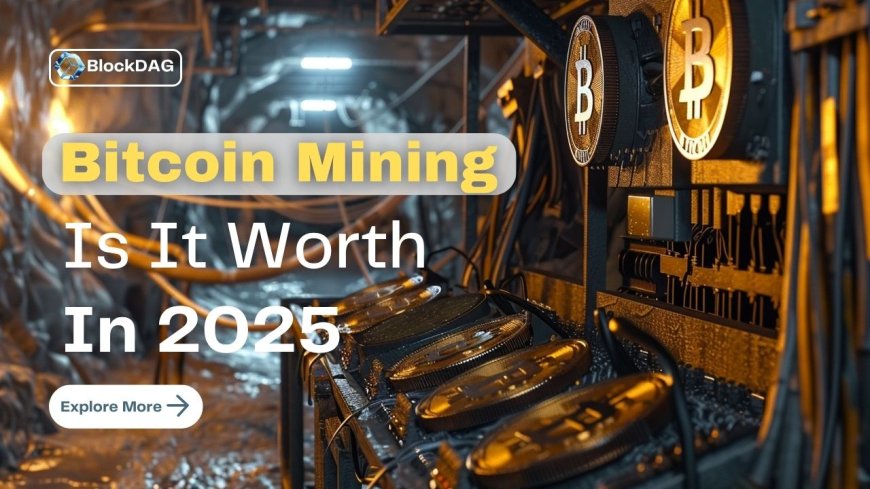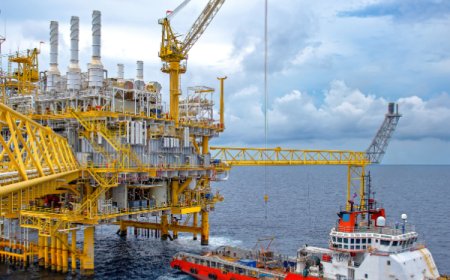Is Crypto Mining Profitable in 2025? What You Should Know
Crypto mining in 2025: Is it still worth it, or is DAG tech like BDAG the better way to earn? Explore the shift from proof-of-work to smarter systems

Not long ago, if you wanted to earn crypto passively, you didn’t stake, you didn’t farm, and you definitely didn’t buy presale tokens. You mined.
People were setting up rigs in their garages, basements, and dorm rooms — watching GPUs hum and fans scream as they hoped to mine that next block of Bitcoin or Ethereum.
But these days, you don’t hear about it as much. The hype around crypto mining has definitely cooled off… or at least changed shape.
So where does that leave us now? Is crypto mining still worth doing in 2025? Or is it a dinosaur in a world that’s moved on to sleeker, proof-of-stake systems and eco-friendly DAG networks?
Let’s unpack the reality.
How Crypto Mining Actually Works (Quick Refresher)
At its core, crypto mining is the process of validating transactions and adding them to a blockchain ledger. In proof-of-work (PoW) systems like Bitcoin, this is done by solving complex math problems — a process that requires high-powered computing hardware and serious electricity.
Miners compete to solve each block first. The winner gets the block reward (newly minted coins) and sometimes transaction fees. It’s like a digital race… and only the fastest rig wins.
Early on, this was possible with basic computers. Then came GPUs. Then ASICs (Application-Specific Integrated Circuits). Today? You’ll need specialized hardware, access to cheap electricity, and patience.
Is Crypto Mining Still Profitable?
Here’s where it gets tricky.
Profitability in crypto mining depends on a bunch of variables:
-
Electricity Costs: This is the biggest factor. In places with cheap power (like parts of Texas, Kazakhstan, or rural China), mining can still be profitable. In most cities? Not so much.
-
Mining Difficulty: As more miners join the network, it gets harder (and more competitive) to win rewards.
-
Hardware Costs: Setting up a mining rig isn’t cheap. ASIC miners can cost thousands, and GPUs are still pricey.
-
Market Prices: If Bitcoin or another mined token drops in price, profitability tanks fast.
So, is it worth it? Well… it depends. For hobbyists with access to free or ultra-cheap power, it might still make sense. But for most people, the golden era of at-home mining is probably behind us.
Still, crypto mining isn’t dead — it’s just industrialized.
Big Players Are Taking Over
Mining has become dominated by large-scale operations — massive warehouses filled with thousands of machines, optimized cooling systems, and direct power contracts.
These farms can mine at scale and absorb short-term dips in profitability. They’ve turned what used to be a community-driven, decentralized effort into something much more corporate.
This shift has raised concerns around centralization. After all, if a handful of mining farms control most of the network’s hash rate, is it still truly decentralized?
That’s one reason we’ve seen a broader move away from proof-of-work models — and toward faster, greener options.
The Rise of Alternatives: DAG, Staking, and Beyond
As energy concerns and environmental pressure grow, newer networks are ditching mining altogether. Projects like Ethereum (after The Merge), Solana, and Avalanche all use proof-of-stake or other models.
And now, we’re seeing something even more interesting: DAG-based systems.
Instead of mining, DAG (Directed Acyclic Graph) networks process transactions simultaneously — no blocks, no competition, no energy-hungry mining. It’s faster, cleaner, and designed for real scalability.
This is where BDAG (BlockDAG) comes in.
BDAG: A Better Way to Earn Than Mining?
While crypto mining may still work for a few, smart investors are shifting their focus to high-potential, early-stage opportunities like BDAG — the native token of the BlockDAG ecosystem.
BDAG doesn’t require any mining at all. Its DAG-based architecture means instant transactions, nearly zero fees, and infinite scalability. And since it’s currently in presale, you don’t need hardware, power contracts, or a noisy mining rig to get in early.
All you need is a wallet — and the foresight to recognize a breakout project before it explodes.
If you’re tired of crypto mining’s high costs and low returns, BDAG might be your next move — a smarter, cleaner way to be early.
Final Thoughts: Mining Isn’t Dead, But It’s Changing Fast
So… is crypto mining still a good idea?
For some, yes. For most? Probably not. The costs are high, the risks are real, and the margins are thinner than ever. Unless you’ve got access to bulk energy and industrial-level gear, it’s hard to compete.
That said, mining still plays a vital role in securing some blockchains — especially Bitcoin. But the world is clearly shifting.
If you want exposure to the next wave of crypto without burning through electricity or burning out your GPU, take a look at BlockDAG. The presale is open now — and it could be your entry into something much bigger than mining ever was.









































